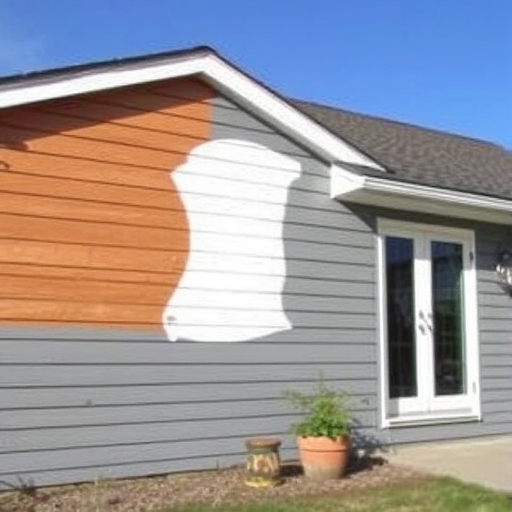How Long Does It Take for Exterior Paint to Dry?
When it comes to home improvement projects, painting the exterior of your house can significantly enhance its curb appeal and protect it from the elements. However, one of the most common questions homeowners have is: How long does it take for exterior paint to dry? The answer is not as straightforward as it may seem, as drying time can vary based on several factors. In this article, we will explore the various factors that influence exterior paint drying times, the different types of paint available, and practical tips to ensure a smooth painting process.
Understanding Paint Drying Times
Before we dive into the specifics, it’s essential to understand the difference between drying and curing.
- Drying refers to the time it takes for the paint to become dry to the touch.
- Curing is the process by which the paint reaches its maximum durability and hardness, which can take days or even weeks.
- Temperature: Paint dries faster in warmer temperatures. Ideal conditions are typically between 50°F and 85°F (10°C to 30°C).
- Humidity: High humidity levels can slow down the drying process. Aim for humidity levels below 70% for optimal drying.
- Wind: A gentle breeze can help speed up drying times by promoting evaporation.
- Dry to Touch: 1-8 hours (depending on paint type)
- Recoat: 4-24 hours
- Full Cure: 2 weeks to 4 weeks
- Paint on a warm, dry day. Early morning or late afternoon can be ideal times.
- Avoid painting in direct sunlight, as it can cause the paint to dry too quickly, leading to cracking or peeling.
- Set up fans to improve air circulation around the painted area. This can help evaporate moisture faster.
- Apply thinner coats of paint. This not only speeds up drying time but also enhances the finish quality.
- Consider using paint additives that are designed to reduce drying time. Always read the manufacturer’s instructions before adding anything to your paint.
- If the humidity is high, consider using a dehumidifier in enclosed spaces to help with drying.
- Rushing to recoat or apply additional layers can lead to poor adhesion and finish quality.
- Avoid painting in extreme temperatures or high humidity, as this can affect the drying process.
- Failing to clean and prepare the surface can lead to uneven drying and poor paint adhesion.
- Using the wrong brushes or rollers can affect the thickness of the paint application and, consequently, the drying time.
Factors Influencing Drying Time
Several factors can impact how long it takes for exterior paint to dry:
1. Type of Paint
Different types of paint have different drying times. Here’s a quick overview:
| Paint Type | Dry to Touch | Recoat Time | Full Cure Time |
|---|---|---|---|
| Latex Paint | 1-2 hours | 4-6 hours | 2 weeks |
| Oil-Based Paint | 6-8 hours | 24 hours | 7 days |
| Acrylic Paint | 1-2 hours | 4-6 hours | 2-4 weeks |
| Alkyd Paint | 6-8 hours | 24 hours | 7 days |
2. Weather Conditions
Weather plays a significant role in drying times. Consider the following:
3. Surface Preparation
Proper surface preparation can greatly affect drying times. Clean, dry surfaces allow paint to adhere better and dry faster.
4. Application Thickness
The thickness of the paint application also matters. Thicker coats take longer to dry. It’s best to apply multiple thin coats rather than one thick coat.
5. Type of Surface
Different materials absorb paint differently. For example, porous surfaces like wood may require more time to dry compared to non-porous surfaces like metal.
Recommended Drying Times
Here’s a general guideline for how long you should wait before performing various tasks after applying exterior paint:
Tips for Faster Drying
If you want to speed up the drying process, consider the following tips:
1. Choose the Right Day
2. Use Fans
3. Thin Coats
4. Use a Paint Additive
5. Monitor Humidity Levels
Common Mistakes to Avoid
To ensure a successful exterior painting project, keep these common mistakes in mind:
1. Not Allowing Enough Drying Time
2. Painting in Poor Conditions
3. Ignoring Surface Preparation
4. Using the Wrong Tools
Frequently Asked Questions (FAQs)
1. How long does it take for exterior paint to dry completely?
The full cure time for exterior paint can range from 2 weeks to 4 weeks, depending on the type of paint used and environmental conditions.
2. Can I paint in high humidity?
While you can paint in high humidity, it’s not recommended as it can significantly slow down the drying process. Aim for humidity levels below 70%.
3. What happens if it rains after I paint?
If it rains shortly after painting, it can wash away the paint or cause it to run. It’s best to wait at least 24 hours after painting before expecting rain.
4. How can I tell if the paint is dry?
You can check if paint is dry to the touch by lightly touching it with your finger. If it feels sticky or comes off on your finger, it needs more time to dry.
5. What should I do if the paint feels tacky after drying?
If the paint feels tacky after the recommended drying time, it could be due to high humidity or applying a thick coat. Allow it more time to dry, or check if the paint was mixed properly.
Conclusion
Understanding how long it takes for exterior paint to dry is crucial for achieving a professional-looking finish. By considering factors such as paint type, weather conditions, and proper preparation, you can ensure that your exterior painting project is a success. Remember to allow adequate drying time between coats and to monitor the environmental conditions during the process. With the right approach, your freshly painted exterior will not only look stunning but will also stand the test of time against the elements. Happy painting!

